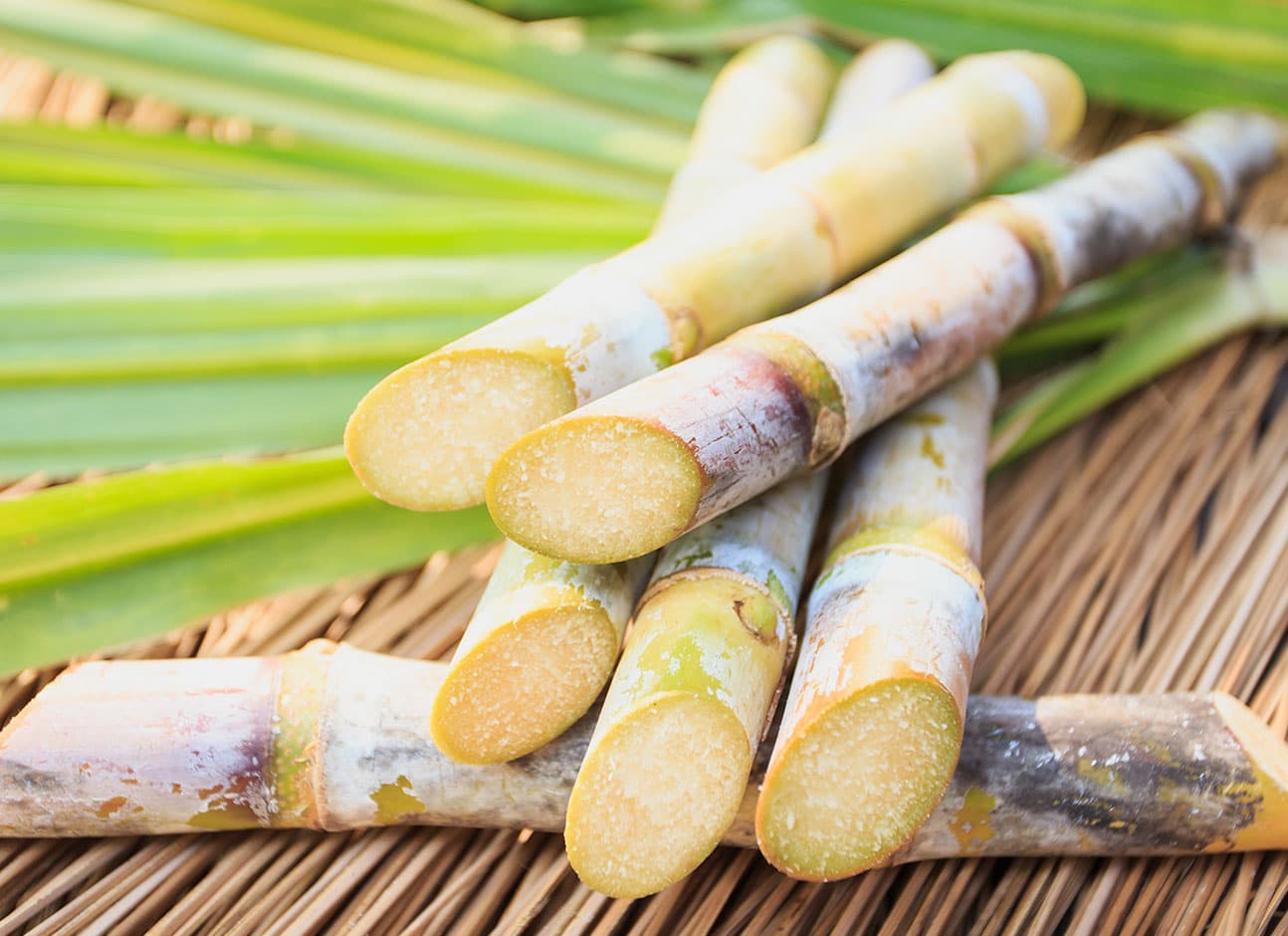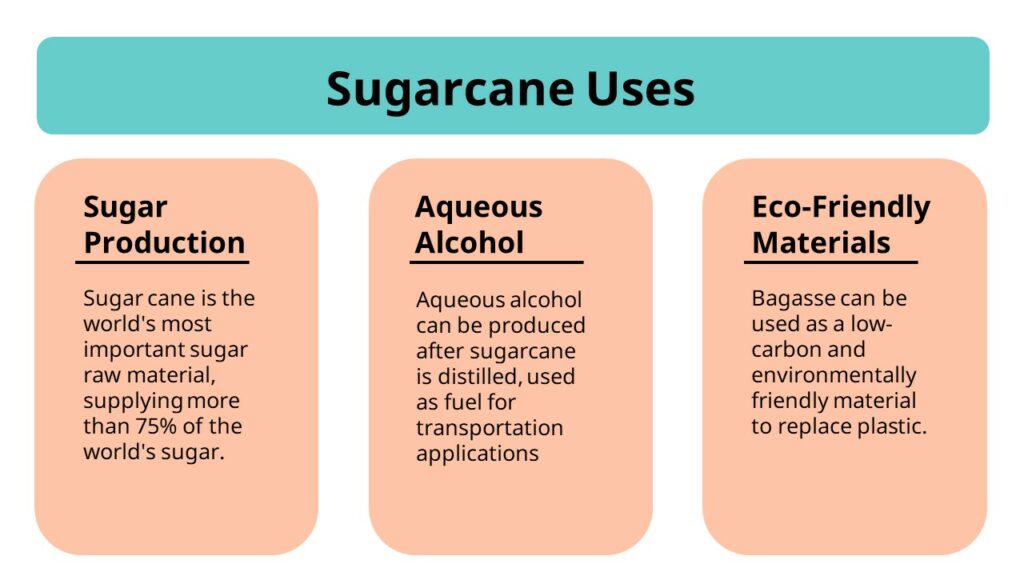What Are Sugar Canes Used For in Restaurants and Beverage Startups
Wiki Article
Everything About Sugar Canes: What Are Sugar Canes Utilized For and Their Role in International Agriculture?
Sugar walking canes function as a cornerstone of global farming, mainly recognized for their function in sugar manufacturing. They likewise add to the creation of spin-offs like molasses and ethanol. These facets not only sustain numerous markets but likewise impact financial stability in country regions. Nonetheless, the cultivation of sugar walking canes deals with substantial environmental challenges. Comprehending their complex duty triggers more exploration into their farming practices and sustainability initiatives.The Agricultural Refine of Sugar Walking Cane Growing
Sugar walking cane farming may differ by area, the fundamental farming process continues to be constant. The first action entails picking high-yielding selections ideal for neighborhood environments. Preparation of the soil is necessary, commonly needing husbandry and the enhancement of plant foods to boost fertility. Planting usually happens throughout the stormy period, with farmers making use of either entire stalks or cuttings to establish brand-new crops.As the plants expand, they need attentive treatment, consisting of weed control, pest monitoring, and watering, relying on the ecological problems. Farmers check the sugar walking cane's development cycle, which generally extends 10 to 24 months, before gathering. Gathering is labor-intensive, commonly conducted by hand or with specialized machinery, guaranteeing very little damages to the stalks. Adhering to harvest, the walking cane is moved to refining centers. This careful farming process not only sustains regional economic climates but additionally plays a substantial function in global farming practices, adding to food and power products.Sugar Manufacturing: From Cane to Crystal
The journey of sugar manufacturing begins the minute newly harvested sugar cane gets here at refining centers. The primary step involves chopping the cane and washing to prepare it for removal. Utilizing high-pressure rollers, the juice is removed from the crushed walking cane, leading to a sweet liquid referred to as sugarcane juice. This juice undertakes clarification, where impurities are gotten rid of via the addition of lime and heat.Next, the clarified juice is concentrated by boiling it to develop a thick syrup. This syrup is after that taken shape by cooling, allowing sugar crystals to develop. The taken shape sugar is divided from the staying syrup, called molasses, through centrifugation.Finally, the sugar crystals are washed and dried out, resulting in the familiar granulated sugar (What Are Sugar Canes Used For). This procedure transforms raw sugar walking stick right into a product that is important to numerous culinary and commercial applications, highlighting the relevance of sugar in global agricultureBiofuels and Sugar Canes: A Lasting Future
As the globe increasingly seeks lasting energy solutions, sugar canes have actually arised as a promising resource for biofuels. The biomass originated from sugar walking sticks can be exchanged ethanol, a renewable fuel option that noticeably reduces greenhouse gas discharges contrasted to nonrenewable fuel sources. This procedure not just supplies a cleaner power resource but also promotes power freedom for many countries.In addition, sugar walking stick farming supports rural economic climates by producing tasks in both farming and biofuel production industries. The use of sugar walking sticks for biofuel production likewise motivates farming diversity, which can enhance soil health and wellness and minimize dependence on solitary plants. The spin-offs of sugar walking stick handling can be utilized for electricity generation, furthermore contributing to a lasting energy cycle. As countries undertaking to satisfy eco-friendly energy targets, sugar canes are poised to play an important function in shaping an extra sustainable future in the biofuel landscape.
The Role of Sugar Canes in Drink Production
Sugar canes play a substantial function in beverage production, working as a main ingredient in rum and adding to the sweet taste of several sodas. Furthermore, their all-natural juices are utilized in different beverages, improving flavor and allure. This convenience emphasizes the value of sugar walking sticks in the global beverage industry.Sugar Walking Stick in Rum
Rum production is delicately connected to the cultivation of sugar walking cane, a necessary crop that provides the required fermentable sugars required for fermentation. This process starts with the extraction of juice from collected sugar walking sticks, which is after that either fermented directly or refined into molasses. Yeast is included in transform the sugars into alcohol, resulting in a varied range of rum designs, from light to dark varieties. The geographical area where the sugar cane is expanded considerably influences the taste profile of the rum, with variables such as soil kind and climate playing crucial duties. Countries like Barbados, Jamaica, and Cuba are renowned for their rum manufacturing, showing the social and historical significance of sugar walking cane within the global drink industry.Soft Drinks Sweetener Resource

All-natural Juice Production Uses
In addition to its substantial duty in soft beverage production, sugar cane is also essential in the natural juice sector. The juice drawn out from sugar walking stick, known as cane juice, is commemorated for its natural sweetness and unique taste account. This juice is commonly consumed fresh in numerous areas, especially in tropical nations, where it is taken pleasure in as a rejuvenating beverage. Furthermore, cane juice offers as a base active ingredient in a series of natural fruit juices and smoothie mixes, boosting both taste and dietary worth. Its natural properties make it an eye-catching option to artificial sugar, attracting health-conscious customers. In general, sugar cane's convenience in juice manufacturing underscores its value in modern drink offerings worldwide.Innovations in Sugar Walking Cane Byproducts
Developments in sugar walking cane byproducts are leading the method for lasting services in numerous industries. Biofuels originated from sugar walking cane provide a different energy resource, while improvements in lasting packaging are minimizing dependence on traditional products. These growths highlight the flexibility and capacity of sugar walking cane beyond its primary usage in drink manufacturing.
Biofuels From Sugar Cane
Exactly how can the by-products of sugar walking cane add to sustainable power remedies? The conversion of sugar walking stick right into biofuels presents a promising opportunity for eco-friendly power. By utilizing the coarse deposit, referred to as bagasse, producers can produce bioethanol via fermentation procedures. This bioethanol can offer as a lasting alternative to nonrenewable fuel sources, minimizing greenhouse gas exhausts and dependence on non-renewable sources. Additionally, molasses, another byproduct, can be fermented to generate biofuels, making the most of resource effectiveness. The energy produced from sugar walking stick not only offers a cleaner fuel source yet additionally boosts the total financial stability of sugar manufacturing. By incorporating biofuel manufacturing right into their operations, sugar walking cane sectors can play a vital duty in progressing lasting power options internationally.Sustainable Packaging Solutions
Sustainable packaging services are increasingly being created from sugar cane byproducts, showcasing the flexibility of this agricultural staple. Innovations such as eco-friendly plastics originated from bagasse, the coarse residue left after juice removal, are obtaining traction. These materials provide an environment-friendly option to traditional plastics, lowering dependence on nonrenewable fuel sources and reducing carbon footprints. In addition, sugar cane-based packaging is compostable, damaging down normally without harming the setting. Business are now discovering these choices to align with customer demand for sustainability. As recognition of plastic contamination grows, the fostering of sugar cane-derived packaging is anticipated to increase, positioning sugar canes as a crucial player in the change to greener packaging remedies in different sectors.Economic Effect of Sugar Cane Farming

Sugar cane farming has navigate here deep roots in several economies, its economic effect expands far beyond farming manufacturing. This plant offers as a substantial source of income for numerous farmers worldwide, particularly in establishing nations where agriculture is a primary source of income. Sugar walking stick contributes to regional economic climates via job creation in handling, harvesting, and growing. The market likewise promotes development in relevant sectors such as transport, tools manufacturing, and food processing.Furthermore, sugar walking cane is a crucial gamer in global profession, affecting international markets and rates. Nations that generate sugar walking cane frequently depend on exports to boost their financial security. The spin-offs of sugar walking stick, such as ethanol and molasses, branch out income streams for farmers and add value to the farming sector. In general, the economic ramifications of sugar walking cane farming are extensive, affecting not only farmers but additionally whole communities and nationwide economic situations.
Environmental Factors To Consider in Sugar Walking Cane Growing
While sugar walking cane farming plays a crucial function in many economic climates, it also increases significant ecological concerns that can not be forgotten. The substantial use of plant foods and chemicals in sugar walking stick farming typically leads to soil destruction and water pollution. Drainage from these chemicals can contaminate close-by water bodies, damaging aquatic communities. In addition, the monoculture practices widespread in sugar walking stick farming lower biodiversity, making communities extra susceptible to parasites and diseases.Deforestation is another important issue, as land is typically gotten rid of to make way for sugar vineyards, leading to environment loss for wildlife and raised carbon emissions. The high water intake needed for sugar cane irrigation can strain regional water sources, especially in dry regions. As international demand for sugar remains to rise, attending to these ecological obstacles becomes important to ensure lasting methods in sugar walking cane growing.Regularly Asked Questions
What Are the Nutritional Conveniences of Sugar Walking Cane?
The dietary advantages of sugar walking cane mostly include its high carb web content, giving power. Furthermore, it consists of vitamins, minerals, and antioxidants that may support overall wellness, though small amounts is essential due to its sugar web content.Just How Does Sugar Walking Cane Affect Resident Ecosystems?
Sugar walking stick growing can significantly affect local communities by altering land use, influencing biodiversity, and calling for considerable water resources. Additionally, it might bring about dirt deterioration and pesticide drainage, interfering with bordering habitats and wild animals populaces.What Is the History of Sugar Walking Cane Cultivation?

Are There Alternatives to Sugar Walking Cane for Sugar Manufacturing?
Alternatives to sugar cane for sugar manufacturing include sugar beetroots, corn, and various exotic plants like sorghum and agave (What Are Sugar Canes Used For). These crops supply diverse resources of sweetness, each with distinctive growing demands and ecological effectsJust How Do Weather Condition Patterns Influence Sugar Cane Returns?
Weather patterns substantially influence sugar walking cane yields with temperature level changes, rains amounts, and seasonal cycles. Dry spell or excessive rains can hinder development, while perfect problems enhance photosynthesis, eventually affecting the amount and quality of the harvest. The trip of sugar production begins the minute newly collected sugar walking stick gets here at processing centers. The crystallized sugar is separated from the continuing to be syrup, understood as molasses, via centrifugation.Finally, the sugar crystals are cleaned and dried, resulting in the familiar granulated sugar. Rum manufacturing is intricately connected to the cultivation of sugar walking stick, an essential plant that gives the required fermentable sugars check these guys out required for fermentation. Furthermore, the review monoculture techniques prevalent in sugar cane farming reduce biodiversity, making ecosystems much more prone to parasites and diseases.Deforestation is an additional critical issue, as land is typically cleared to make means for sugar ranches, leading to habitat loss for wildlife and boosted carbon emissions. Alternatives to sugar walking stick for sugar production consist of sugar beets, corn, and numerous tropical plants like sorghum and agave.Report this wiki page